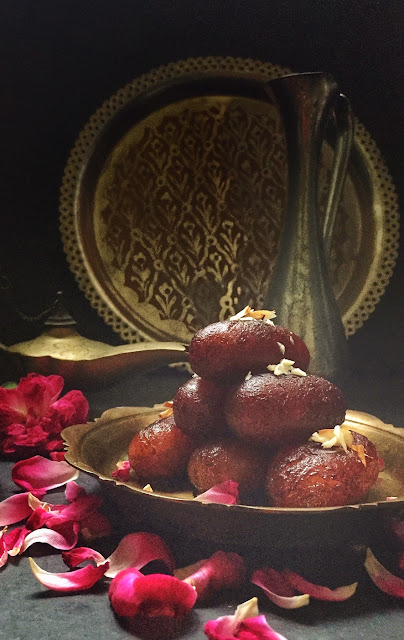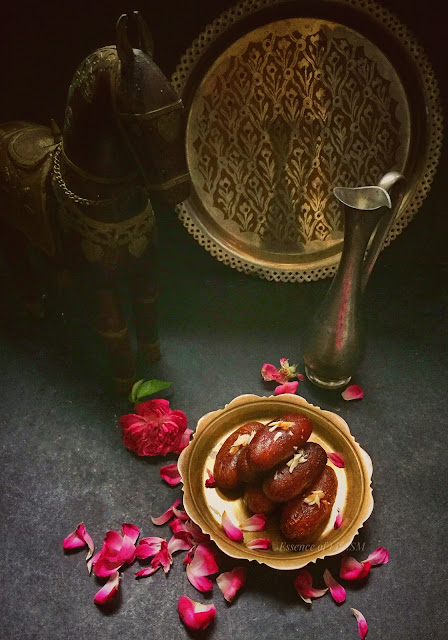Bengali Langcha/Lyangcha Recipe: A Festive Diwali Delight
"Bengali Langcha/Lyangcha: A Unique Twist on Gulab Jamun"
When I first encountered the Bengali Langcha, I was convinced it was just another variant of Gulab Jamun. Its appearance and ingredients seemed strikingly similar to those used in making Gulab Jamuns. However, as I delved deeper, I discovered that Langcha is a unique treat with its own distinctive characteristics. This year, particularly during the lockdown period due to Covid-19, I experimented with various snacks, sweets, and desserts. Despite numerous attempts, including perfecting my Gulab Jamun recipe, I found myself captivated by the charm of Bengali Langcha.
What is Bengali Langcha/Lyangcha?
Bengali Langcha, also known as Lyangcha, is a delightful sweet from the Bengal region, offering a delicious departure from the familiar Gulab Jamun. Unlike Gulab Jamun, which is universally popular and often mistaken for other similar sweets, Langcha has its own unique taste and texture. This sweet treat is a fantastic addition to your Diwali menu, providing a new twist on traditional desserts.
Langcha, Pantua, and Gulab Jamun: A Sweet Trio with Unique Flavours

Gulab Jamun, Pantua, and Langcha might seem like sweet triplets at first glance, but each of these traditional treats is distinct in its own right. They differ significantly in ingredients, shape, and taste, making each one a unique addition to any festive spread.
Understanding the Differences: Langcha, Pantua, and Gulab Jamun
Langcha/Lyangcha: The Bengali Delight
Langcha, also known as Lyangcha, is a classic Bengali sweet that shares some similarities with Gulab Jamun but is distinct in several ways:
- Ingredients: Langcha is made with Khoya (Mawa) and Paneer (Chenna). This combination gives it a rich and creamy texture.
- Shape and Size: Unlike Gulab Jamun, which is round, Langcha has a cylindrical shape and is longer in size.
- Origin: The best Langchas are crafted in Shaktigarh, a quaint town near Burdwan district in West Bengal.
Pantua: A Close Relative to Gulab Jamun
Pantua is another Bengali sweet that bears resemblance to Gulab Jamun but has its own unique characteristics:
- Ingredients: Like Langcha, Pantua is made with Khoya and Paneer. However, it is shaped like a Gulab Jamun.
- Texture: Pantuas are softer than Gulab Jamuns and do not typically include rose essence or saffron.
- Preparation: The texture of Pantua is notably softer compared to Gulab Jamun, offering a different experience.
Gulab Jamun: The Classic Favourite
Gulab Jamun is a globally beloved sweet known for its rich flavour and distinctive aroma:
- Ingredients: Traditionally made with Khoya (Mawa), Gulab Jamun is renowned for its rose-like fragrance (Gulab means Rose).
- Flavour and Texture: Gulab Jamun has a richer flavour compared to Pantua and Langcha. It may also contain nuts or dry fruit fillings in some variations.
- Variations: Some recipes use Milk Powder as a base instead of Khoya, adding another layer of diversity to this iconic sweet.
The Versatility of Paneer/Chenna in Bengali Sweets
Paneer (Chenna) plays a crucial role in Bengali cuisine and is used in a variety of sweets:
- Paneer/Chhanar Jilipi: This sweet resembles Jalebi and is made from Paneer.
- Ledikeni: A famous sweet named after Lady Canning, showcasing the rich heritage of Bengali sweets.
- Kala Jamun and Chitrakoot: Additional examples of Paneer-based sweets with unique flavours and preparations.
Looking for More Festive Recipes? Click Here for Diwali Inspirations!
Cuisine - Bengali (Indian)
Recipe Type - Sweet, Dessert
Difficulty - Medium
Yields - 10–12 Pieces
Author - SM
Preparation Time - 15–20 Minutes
Leavening Time - 5–8 Minutes
Cooking Time - 20–30 Minutes
Soaking Time - 2–3 Hours
Master the Art of Making Bengali Langcha/Lyangcha: A Step-by-Step Guide
 |
Ingredients for Bengali Langcha/Lyangcha
For the Langcha:
- 2 Cups Paneer/Chenna
- 1 Cup Khoya/Mawa
- 2 Tablespoons All-purpose Flour (Maida)
- A pinch of Baking Powder
- 1/4 Teaspoon Cardamom Powder
- 1/2 Tablespoon Ghee
- A Pinch of Salt (Optional)
For Deep Frying:
- Oil/Ghee
For Sugar Syrup:
- 2 Cups Sugar
- 4 Cups Water
- 3–4 Nos. Green Cardamoms
For Garnishing:
- Almonds/Pistachios – Few (Optional)
Method to Prepare Bengali Langcha/Lyangcha
Preparing the Dough:
- Grate and Mash: Grate the Paneer/Chenna and mash it until smooth. Do the same with the Khoya/Mawa.
- Mix Ingredients: In a bowl, combine All-purpose Flour, Ghee, Cardamom Powder, Salt, and Baking Powder. Add the Paneer and Khoya mixture and mix well until smooth.
- Knead the Dough: Knead the mixture using your palms until a soft dough forms. If the dough is too dry, add a bit of milk and knead until soft. Let the dough rest for about 10 minutes.
- Shape the Langchas: Divide the dough into 10-12 equal portions and shape them into smooth, cylindrical logs.
Frying the Langchas:
- Heat Oil/Ghee: Heat Oil or Ghee in a pan and reduce the flame to low.
- Fry Langchas: Fry the Langchas until golden brown, turning frequently for even colour. Remove with a slotted spoon and transfer to the prepared Sugar Syrup.
Preparing the Sugar Syrup:
- Make the Syrup: In a heavy-bottomed pan, combine Sugar and Water. Stir until the sugar dissolves completely. Do not stir once the syrup starts boiling.
- Remove Impurities: Add 2 Tablespoons of milk to the syrup to remove impurities. Skim off any dirt that floats to the surface.
- Check Consistency: The syrup should be sticky, but not overly thick. Test by taking a spoonful and checking the consistency between your fingers. It should flow smoothly when poured from a spoon.
- Add Cardamom: Stir in Cardamom Powder. Let the syrup cool slightly.
Final Steps:
- Soak Langchas: Allow the fried Langchas to soak in the warm sugar syrup for at least 2–3 hours.
- Garnish: Garnish with slivered Almonds or Pistachios if desired.
- Serve: Enjoy Bengali Langchas warm or cold, with a hearty drizzle of sugar syrup.
Related Recipes to Try

Notes & Tips for Perfect Bengali Langcha/Lyangcha:
- Avoid Lumps: Ensure no lumps are present in the mixture to achieve a smooth texture.
- Monitor Dough Consistency: The dough should be soft and pliable. Add milk if needed.
- Deep Frying: Fry Langchas on a medium-low flame for even cooking.
- Sugar Syrup Tip: Adding milk helps remove impurities from the syrup. Simmer until dirt coagulates and floats to the surface.
- Soaking Langchas: Place all the Langchas/Lyangchas in a wide bowl or pan with Sugar Syrup. Ensure they are not overcrowded to allow for even soaking.
- Making Pantua: For Pantua, use the same ingredients as for Langcha but shape them into balls instead of cylindrical logs. Follow the remaining steps as outlined for Langcha.
*TIPS & TRICKS :
Why You Should Try Langcha This Diwali
Langcha is an excellent festive treat to your Diwali celebrations. Here’s why:
- Unique Twist: Langcha offers a refreshing variation to traditional sweets like Gulab Jamun.
- Easy to Prepare: If you have homemade Paneer or Mawa, Langcha can be made quickly and easily.
- Shelf Life: Langchas can be stored in the refrigerator for up to a week, making them a convenient option for festive indulgence.
Try This Bengali Langcha Recipe!
Indulge in the rich flavours of Bengali Langcha this Diwali. If you're looking for more traditional sweets to complement your festive menu, check out our other Gulab Jamun Recipes for more inspiration. While Gulab Jamun remains a global favourite, exploring variations like Langcha and Pantua adds a delightful twist to your sweet offerings. Whether you're a fan of the classic or eager to try something new, these Bengali festive treats are sure to impress.










0 comments